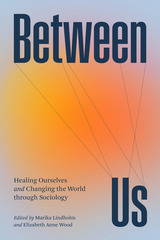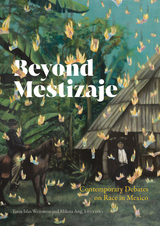62 start with A start with A
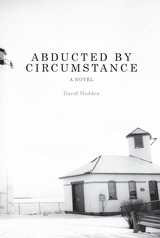
“Abducted by Circumstance is a thrilling crime story, a dark and complex psychological study, a rich contemplation on contemporary life. It is also a masterful moral drama about the centuries-old conflicts that arise from the juxtaposition of the flesh and spirit.”
—Allen Wier, author of Tehano
“David Madden continues to push the envelope of literary fiction in subtle and profoundly sophisticated ways. Abducted by Circumstance is a quirky, utterly compelling novel in pieces that in its very structure speaks to the work’s twenty-first-century theme: how do we find connection in a fragmented world? In this new book Madden is at the height of his considerable power.”
—Robert Olen Butler
In Abducted by Circumstance, David Madden offers his readers a unique experience simultaneously terrifying and exhilarating.
Carol Seaborg makes a risky visit in zero weather to a lighthouse near her house in The Thousand Islands of New York on the Canadian border. A self-confident, attractive woman of about 55 suddenly appears on the observation deck looking out over frozen Lake Ontario. Carol admires the woman as her ideal.
Suddenly, the woman disappears, apparently abducted by a serial rapist and killer, stimulating in Carol an immediate empathy that, enhanced by the power of her imagination, is so great as to make her unique. Carol projects her own emotions, imagination, and intellect into Glenda’s experience.
To render that empathy and imagination, Madden channels everything that the people around her say and do through Carol’s perceptions so intimately that he shifts frequently and without transition into her thoughts, which focus mostly on the abducted woman, whose name newscasters reveal is Glenda Hamilton.
As Carol imagines Glenda gradually coping with her abductor, she speaks directly, sometimes out loud, to her, encouraging her, advising her, expressing fear for her.
If Carol’s external experiences are passive almost to paralysis, her memories reveal that her life has been full of more venturesome relationships and events (she once rode across Greece alone on a bicycle) than most wives and mothers in their late thirties have. Carol’s emotions and imagination are highly charged and exquisitely presented.
The circumstances and relationships of her past and present predispose Carol to empathize with Glenda. Carol’s own life among a crude, remote second husband, a somewhat estranged adolescent son, a bright five-year-old daughter, a father who is a rather cold philosophy teacher, and the strong spiritual presence of her mother who committed suicide, is simple and routine. The events involving Glenda’s disappearance take place during the week before Carol’s second surgery for breast cancer.
Gradually, as she takes late night drives with her little girl, visits her ex-boyfriend’s father in a nursing home, drives by her ex-lover’s house and business, and visits the campus where her father is a prominent teacher, the reader realizes, some pages before Carol herself does, that she has been abducted by the circumstances of her life.
Although it is grounded in the realistic detail of everyday life, Abducted by Circumstance is unique in conception, style, and characterization. Madden immerses the reader in an extraordinarily rich and unforgettable psychological experience.
Thoroughly absorbing from start to finish, Abducted by Circumstance explores Carol’s troubled psyche with the rare precision and insight that have long distinguished David Madden’s fiction.
Since 1961, each of David Madden’s highly praised novels and two books of short stories has had some quality of uniqueness, among them Cassandra Singing, Sharpshooter: A Novel of the Civil War, Bijou, and The Suicide’s Wife. Twice nominated for the Pulitzer Prize, David Madden received the Robert Penn Warren Award from the Fellowship of Southern Writers.
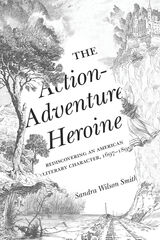
Unlike the “tomboy” or the American frontierswoman, this more encompassing figure has been understudied until now. The action-adventure heroine has special relevance today, as scholars are forcefully challenging the once-dominant separate-spheres paradigm and offering alternative interpretations of gender conventions in nineteenth-century America. The hard-body action heroine in our contemporary popular culture is often assumed to be largely a product of the twentieth-century television and film industries (and therefore influenced by the women’s movement); however, physically strong, agile, sometimes violent female figures have appeared in American popular culture and literature for a very long time.
Smith analyzes captivity narratives, war narratives, stories of manifest destiny, dime novels, and tales of seduction to reveal the long literary history of female protagonists who step into traditionally masculine heroic roles to win the day. Smith’s study includes such authors as Herman Mann, Mercy Otis Warren, Catharine Maria Sedgwick, E.D.E.N. Southworth, Edward L. Wheeler, and many more who are due for critical reassessment. In examining the female hero—with her strength, physicality, and violence—in eighteenth-and nineteenth-century American narratives, The Action-Adventure Heroine represents an important contribution to the field of American studies.

Praise for the hardcover edition:
"A momentous book which I feel is destined to become a classic in the category of scholarly narcotic books."
—Claude Brown, author of the bestseller, Manchild in the Promised Land.
"The drug literature is filled with the stereotyped opinions of non-addicted, middle-class pundits who have had little direct contact with addicts. These stories are reality. Narcotic addicts of the inner cities are both tough and gentle, deceptive when necessary and yet often generous--above all, shrewd judges of character. While judging them, the clinician is also being judged."
—Vincent P. Dole, M.D., The Rockefeller Institute.
"What was it like to be a narcotic addict during the Anslinger era? No book will probably ever appear that gives a better picture than this one. . . . a singularly readable and informative work on a subject ordinarily buried in clichés and stereotypes."
—Donald W. Goodwin, Journal of the American Medical Association
" . . . an important contribution to the growing body of literature that attempts to more clearly define the nature of drug addiction. . . . [This book] will appeal to a diverse audience. Academicians, politicians, and the general reader will find this approach to drug addiction extremely beneficial, insightful, and instructive. . . . Without qualification anyone wishing to acquire a better understanding of drug addicts and addiction will benefit from reading this book."
—John C. McWilliams, Pennsylvania Magazine of History and Biography
"This study has much to say to a general audience, as well as those involved in drug control."
—Publishers Weekly
"The authors' comments are perceptive and the interviews make interesting reading."
—John Duffy, Journal of American History
"This book adds a vital and often compelling human dimension to the story of drug use and law enforcement. The material will be of great value to other specialists, such as those interested in the history of organized crime and of outsiders in general."
—H. Wayne Morgan, Journal of Southern History
"This book represents a significant and valuable addition to the contemporary substance abuse literature. . . . this book presents findings from a novel and remarkably imaginative research approach in a cogent and exceptionally informative manner."
—William M. Harvey, Journal of Psychoactive Drugs
"This is a good and important book filled with new information containing provocative elements usually brought forth through the touching details of personal experience. . . . There isn't a recollection which isn't of intrinsic value and many point to issues hardly ever broached in more conventional studies."
—Alan Block, Journal of Social History
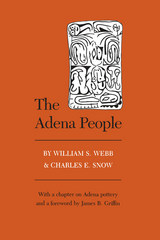
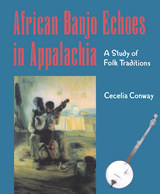
Drawing in part on interviews with elderly African-American banjo players from the Piedmont—among the last American representatives of an African banjo-playing tradition that spans several centuries—Conway reaches beyond the written records to reveal the similarity of pre-blues black banjo lyric patterns, improvisational playing styles, and the accompanying singing and dance movements to traditional West African music performances. The author then shows how Africans had, by the mid-eighteenth century, transformed the lyrical music of the gourd banjo as they dealt with the experience of slavery in America.
By the mid-nineteenth century, white southern musicians were learning the banjo playing styles of their African-American mentors and had soon created or popularized a five-string, wooden-rim banjo. Some of these white banjo players remained in the mountain hollows, but others dispersed banjo music to distant musicians and the American public through popular minstrel shows.
By the turn of the century, traditional black and white musicians still shared banjo playing, and Conway shows that this exchange gave rise to a distinct and complex new genre—the banjo song. Soon, however, black banjo players put down their banjos, set their songs with increasingly assertive commentary to the guitar, and left the banjo and its story to white musicians. But the banjo still echoed at the crossroads between the West African griots, the traveling country guitar bluesmen, the banjo players of the old-time southern string bands, and eventually the bluegrass bands.
The Author: Cecelia Conway is associate professor of English at Appalachian State University. She is a folklorist who teaches twentieth-century literature, including cultural perspectives, southern literature, and film.
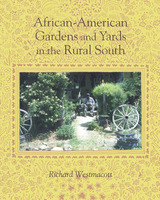
The book remains a valuable and richly illustrated resource for those interested in African American material culture and the history of vernacular gardens. It includes measured drawings and physical inventories of African American gardens in three geographic areas: the low country of South Carolina, the southern piedmont of Georgia, and the black belt of Alabama. The descriptions are enhanced by the author's personal interviews with the gardeners, in which he documents the aesthetic qualities, designs, and purposes of their yards and gardens.
Westmacott traces the evolution of African American yards and gardens and over the last two hundred years and discusses the possible African origins of certain traditions, such as the swept yard. He also notes similarities in attitude between rural southern blacks and whites regarding the importance of the agrarian lifestyle, self-reliance, and private ownership. Despite such similarities, he shows, the patterns and practices in which those beliefs are manifested among African Americans are uniquely their own.
The Author: Richard Westmacott is a professor of environmental design at the University of Georgia and lives in rural Georgia.
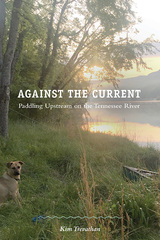
In August 1998 Kim Trevathan summoned his beloved 45-pound German shepherd mix, Jasper, and paddled a canoe down the Tennessee River, an adventure chronicled in Paddling the Tennessee River: A Voyage on Easy Water. Twenty years later, in Against the Current: Paddling Upstream on the Tennessee River, he invites readers on a voyage of light-hearted rumination about time, memory, and change as he paddles the same river in the same boat—but this time going upstream, starting out in early spring instead of late summer. In sparkling prose, Trevathan describes the life of the river before and after the dams, the sometimes daunting condition of its environment, its banks’ host of evolving communities—and also the joys and follies of having a new puppy, 65-pound Maggie, for a shipmate.
Trevathan discusses the Tennessee River’s varied contributions to the cultures that hug its waterway (Kentuckians refer to it as a lake, but Tennesseans call it a river), and the writer’s intimate style proves a perfect lens for the passageway from Kentucky to Tennessee to Alabama and back to Tennessee. In choice observations and chance encounters along the route, Trevathan uncovers meaningful differences among the Tennessee Valley’s people—and not a few differences in himself, now an older, wiser adventurer.
Whether he is struggling to calm his land-loving companion, confronting his body’s newfound aches and pains, craving a hard-to-find cheeseburger, or scouting for a safe place to camp for the night, Trevathan perseveres in his quest to reacquaint himself with the river and to discover new things about it. And, owing to his masterful sense of detail, cadence, and narrative craft, Trevathan keeps the reader at the heart of the journey. The Tennessee River is a remarkable landmark, and this text exhibits its past and present qualities with a perspective only Trevathan can provide.

Drawn mainly from the centennial anniversary symposium on James Agee held at the University of Tennessee in the fall of 2009, the essays of Agee at 100 are as diverse in topic and purpose as is Agee’s work itself. Often devalued during his life by those who thought his breadth a hindrance to greatness, Agee’s achievements as a poet, novelist, journalist, essayist, critic, documentarian, and screenwriter are now more fully recognized. With its use of previously unknown and recently recovered materials as well as established works, this groundbreaking new collection is a timely contribution to the resurgence of interest in Agee’s significance.
The essays in this collection range from the scholarly to the personal, and all offer insight into Agee’s writing, his cultural influence, and ultimately Agee himself. Dwight Garner opens with his reflective essay on “Why Agee Matters.” Several essays present almost entirely new material on Agee. Paul Ashdown writes on Agee’s book reviews, which, unlike Agee’s film criticism, have received scant attention. With evidence from two largely unstudied manuscripts, Jeffrey Couchman sets the record straight on Agee’s contribution to the screenplay for The African Queen and delves as well into his television “miniseries” screenplay Mr. Lincoln. John Wranovics treats Agee’s lesser-known films--the documentaries In the Street and The Quiet One and the Filipino epic Genghis Khan. Jeffrey J. Folks wrestles with Agee’s “culture of repudiation” while James A. Crank investigates his perplexing treatment of race in his prose. Jesse Graves and Andrew Crooke provide new analyses of Let Us Now Praise Famous Men, and Michael A. Lofaro and Philip Stogdon both discuss Lofaro’s recently restored text of A Death in the Family. David Madden closes the collection with his short story “Seeing Agee in Lincoln,” an imagined letter from Agee to his longtime confidante Father Flye.
The contributors to Agee at 100 utilize materials new and old to reveal the true importance of Agee's range of cultural sensibility and literary ability. Film scholars will also find this collection particularly engrossing, as will anyone fascinated by the work of the author rightly deemed the “sovereign prince of the English language.”
Michael A. Lofaro is Lindsay Young Professor of American Literature and American and Cultural Studies at the University of Tennessee. Most recently, he restored James Agee’s A Death in the Family and is the general editor of the projected eleven-volume The Works of James Agee.
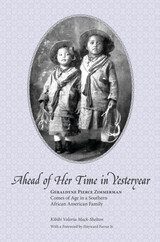
Born into a relatively privileged family, Geraldyne Pierce Zimmerman earned a reputation as a maverick in her lifelong home of Orangeburg, South Carolina, a semirural community where race and class were very much governed by the Jim Crow laws. Educated at Nashville’s Fisk University, Zimmerman returned to Orangeburg to teach school, serve her community, and champion equal rights for African Americans and women.
Kibibi V. Mack-Shelton offers a vivid portrayal of the kind of black family seldom recognized for its role in the development of the African American community after the Civil War. At a time when “separate but equal” usually meant suffering and injustice for the black community, South Carolina families such as the Tatnalls, Pierces, and Zimmermans achieved a level of financial and social success rivaling that of many white families.
Drawing heavily on the oral accounts of Geraldyne Pierce Zimmerman, Mack-Shelton draws the reader into the lives of the African American elite of the early twentieth century. Her captivating narrative style brings to life many complicated topics: how skin color affected interracial interactions and class distinctions within the black community itself, the role of education for women and for African Americans in general, and the ways in which cultural ideas about family and community are simultaneously preserved and transformed over the span of
generations.
Refreshing and engaging, Ahead of Her Time in Yesteryear is a fascinating biography for any reader interested in a new perspective on small-town black culture in the Jim Crow South.

Alexandria Goes to War chronicles the lives of men and women whose service made the city unique in the exceptional quality and variety of talent it provided to the Confederate cause. Some of these sixteen individuals are familiar to Civil War readers as their contributions to the southern war effort brought them special notoriety: General Lee, of course, and his son Custis; Samuel Cooper, the senior general in the Confederate army; and Commodore French Forrest. For others less well known—attorneys George Brent and Douglas Forrest, engineer Wilson Presstman, politician Daniel Funsten, student Randolph Fairfax, and immigrant Patrick O’Gorman—the Civil War provided an opportunity to exercise their full talents.
Alexandrians Orton Williams and Frank Stringfellow became celebrated for their colorful adventures. Montgomery Corse’s life paralleled major developments in mid-nineteenth-century America. Alexander Hunter went on to become a noted author of Civil War remembrances. Kundahl also examines the fate of Anne Frobel, a Southern sympathizer who spent the entire war behind Union lines. The survey concludes by reflecting on the role of Edgar Warfield, who well represents those forlorn survivors of the Lost Cause.
Taken as a whole, these profiles constitute a microcosm of the South’s desperate gamble to secede from the Union and form its own nation. The accounts of their service represent not only a single community’s contribution to the redefining contest in American life but also highlight the diverse endeavors that constituted the southern war effort. Their stories reflect the sacrifices made throughout the region for a cause that became hopeless.
George G. Kundahl served as executive director of the U.S. Securities and Exchange Commission and as a principal deputy assistant secretary at the Department of Defense. After thirty-four years of commissioned service in the U.S. Army, he is now major general, US Army Retired. A graduate of Davidson College, he received an M.A. and Ph.D. in political science from the University of Alabama. Kundahl is the author of Confederate Engineer: Training and Campaigning with John Morris Wampler. He and his wife divide time between their home in Alexandria and the French Riviera.
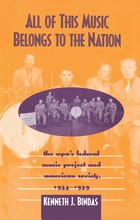
As Kenneth J. Bindas points out, the FMP leadership was more conservative than that of the sister projects in art, theater, and writing. Its stated aim of "raising" the taste of musicians and citizens alike created a particular problem. Although many unemployed musicians came from the sphere of popular music, such as jazz and Tin Pan Alley, the FMP chose to emphasize "cultured" music, particularly the orchestral works of composers in the European classical tradition. Inevitably, this created tension within the project, as those musicians deemed "popular" received second-class treatment and, in the case of racial and ethnic minorities, were segregated and stereotyped. Despite these troubles, Bindas demonstrates, the FMP succeeded in bringing music to millions of listeners across the country.
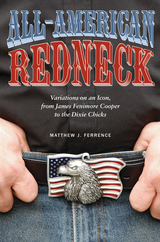
for everything from movies like Smokey and the Bandit to comedy acts like Larry the
Cable Guy. Even a recent president, George W. Bush, shunned his patrician pedigree in favor
of cowboy “authenticity” to appeal to voters. Whether identified with hard work and patriotism
or with narrow-minded bigotry, the Redneck and its variants have become firmly
established in American narrative consciousness.
This provocative book traces the emergence of the faux-Redneck within the context of
literary and cultural studies. Examining the icon’s foundations in James Fenimore Cooper’s
Natty Bumppo—“an ideal white man, free of the boundaries of civilization”—and the degraded
rural poor of Erskine Caldwell’s Tobacco Road, Matthew Ferrence shows how Redneck
stereotypes were further extended in Deliverance, both the novel and the film, and in
a popular cycle of movies starring Burt Reynolds in the 1970s and ’80s, among other manifestations.
As a contemporary cultural figure, the author argues, the Redneck represents
no one in particular but offers a model of behavior and ideals for many. Most important,
it has become a tool—reductive, confining, and (sometimes, almost) liberating—by which
elite forces gather and maintain social and economic power. Those defying its boundaries,
as the Dixie Chicks did when they criticized President Bush and the Iraq invasion, have
done so at their own peril. Ferrence contends that a refocus of attention to the complex
realities depicted in the writings of such authors as Silas House, Fred Chappell, Janisse Ray,
and Trudier Harris can help dislodge persistent stereotypes and encourage more nuanced
understandings of regional identity.
In a cultural moment when so-called Reality Television has turned again toward popular
images of rural Americans (as in, for example, Duck Dynasty and Moonshiners), All-
American Redneck reveals the way in which such images have long been manipulated for
particular social goals, almost always as a means to solidify the position of the powerful at
the expense of the regional.
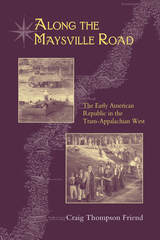
Along the Maysville Road details the life of the trail from its beginnings as a buffalo trace, through its role in populating and transforming an early American West, to its decline in regional and national affairs. This biography of a road thus serves as a microhistory of social and cultural change in the Early American Republic. Integral to this story are the people and groups who traveled and settled along the road: backcountry pioneers, refined Virginia gentry, poor and middling farmers, artisans and merchants from eastern cities, and of course the women and slaves who arrived with them. While these groups imported differing worldviews into the new American West, the merchant class’s commitment to commercial development, material acquisition, and individual achievement prophesied the triumph of a liberal economic order throughout nineteenth-century America. Alongside this individualistic impulse arose increasing pressure to abandon older identities based on regional origins and ethnic backgrounds and to accept a collective historical memory for the growing nation. Throughout the Early Republic, the call of the open road facilitated what it means to be “American.”
Craig Thompson Friend is associate professor of history at the University of Central Florida. He edits the Florida Historical Quarterly and is author of Kentucky Frontiers, 1750–1852 (forthcoming) and editor of The Buzzel About Kentuck: Settling the Promised Land.
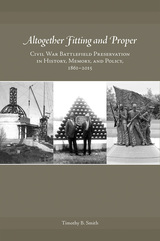
In the century and a half since the Civil War, various entities, both private and public, have earnestly sought to safeguard the legacy of that seismic conflict through the preservation of its battlefields. In Altogether Fitting and Proper—a title taken from Lincoln’s Gettysburg Address—Timothy B. Smith provides the most comprehensive synthesis ever written of the long, often fraught history of those preservation efforts, which began even as the war was still raging and have continued up through the present day.
Smith traces the story of battlefield park establishment from the war and the Reconstruction era through the “Golden Age of Preservation” at the turn of the century, to the New Deal period and well beyond. He pays close attention to the evolution of public policy, as the creation and oversight of parks shifted from the War Department to the National Park Service, and explores the evolving ways in which the Civil War has been remembered over the years, most significantly with regard to its causes: slavery and race. While Smith’s primary focus is on the famous national parks—Gettysburg, Shiloh, Antietam, Chickamauga, and others—he also examines the endeavors of state and local governments, as well as an assortment of private organizations, to establish parks and monuments for lesser-known battle sites. The ongoing conflicts between preservationists and commercial developers form another key element of the narrative.
As Smith makes clear, the story of battlefield preservation is in many ways a story of people—from Civil War veterans like Henry Boynton, the Medal of Honor winner who oversaw the development of the first national military park at Chickamauga, to Jim Lighthizer, the president of the Civil War Trust, the private charitable organization spearheading the twenty-first-century preservation movement. In their dedication to this particular cause, such individuals and the groups they represent have kept a central event in American history alive in our collective memory.

To help athletes in transition, Blackburn identifies “Three Pillars of the Cliff”—Mental Health, Physical Health, and Athlete Identity—and describes the issues that athletes have in each of these areas after they retire. After training, sacrificing, and devoting years, even decades, to a sport, athletes at every level will struggle within these three pillars. Blackburn believes that athletes must evolve from a competition mindset to a wellness mindset and match their new lifestyles in order to soften this transition into the real world. Fortunately, the “Inner Athlete” honed over many years of training and competition can show up as a “Parachute” as athletics recede, and other priorities rise to the forefront of their new life.
Ultimately, Blackburn proposes cycling as a foundation and universal tool to help retired athletes resolve a lingering loss of identity, mental health issues, such as anxiety and depression, and complications due to unchanged diet and exercise habits when they transition out of a performance-purposed existence. She advocates for fun community bike rides adjacent to sporting events and franchises to bring sports communities together around this critical yet overlooked topic for all athletes: life after competitive sports.
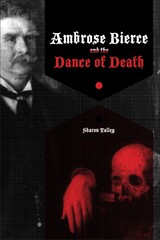
Ambrose Bierce and the Dance of Death uses psychoanalytic theory in combination with historical, cultural, and literary contexts to examine the complex motif of death in a full range of Bierce’s writings. Scholarly interest in Bierce, whose work has long been undervalued, has grown significantly in recent years. This new book contributes to the ongoing reassessment by providing new contexts for joining the texts in his canon in meaningful ways.
Previous attempts to consider Bierce from a psychological perspective have been superficial, often reductive Freudian readings of individual stories such as “An Occurrence at Owl Creek Bridge” and “The Death of Halpin Frayser.” This new volume not only updates these interpretations with insights from post-Freudian theorists but uses contemporary death theory as a framework to analyze the sources and expressions of Bierce’s attitudes about death and dying. This approach makes it possible to discern links among texts that resolve some of the still puzzling ambiguities that have—until now—precluded a fuller understanding of both the man and his writings.
Lively and engaging, Ambrose Bierce and the Dance of Death adds valuable new insights not only to the study of Bierce but to that of nineteenth-century American literature in general.
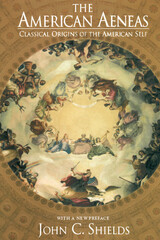
Choice Magazine Outstanding Academic Book??
“John Shields's book is a provocative challenge to the venerable Adamic myth so exhaustively deployed in examinations of early American literature and in American studies. Moreover, The American Aeneas builds wonderfully on Shields's considerable work on Phillis Wheatley. “?—American Literature??
“The American Aeneas should be of interest to classicists and American studies scholars alike.” ?—The New England Quarterly??
John Shields exposes a significant cultural blindness within American consciousness. Noting the biblical character Adam as an archetype who has long dominated ideas of what it means to be American, Shields argues that an equally important component of our nation’s cultural identity—a secular one deriving from the classical tradition—has been seriously neglected.??Shields shows how Adam and Aeneas—Vergil’s hero of the Aeneid— in crossing over to American from Europe, dynamically intermingled in the thought of the earliest American writers. Shields argues that uncovering and acknowledging the classical roots of our culture can allay the American fear of “pastlessness” that the long-standing emphasis on the Adamic myth has generated.
John C. Shields is the editor of The Collected Works of Phillis Wheatley and the author of The American Aeneas: Classical Origins of the American Self, which won a Choice Outstanding Academic Book award and an honorable mention in the Harry Levin Prize competition, sponsored by the American Comparative Literature Association.

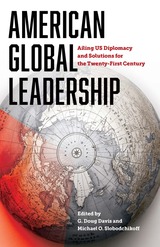
Among other themes, the discussions in this volume explore the relevance of diplomacy in resolving global crises, the use of military policy and force as diplomatic tools, skills diplomats should possess, and current obstacles facing US foreign policy. Through the lens of their professional service as US diplomats, the authors examine American mistakes and successes of the past seventy years to assess how the role of diplomacy within US foreign policy has changed over time and how it must continue to evolve to meet future challenges. One conclusion proves recurrent: the US can no longer afford to rely only on might and force but must rededicate itself to diplomatic strategies to achieve its long-term goals.
American Global Leadership is not just a valuable resource for scholars of diplomatic history and political science; it is also an important work for current diplomats and those aspiring to careers in the US Foreign Service.

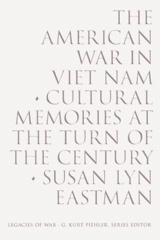
After more than four decades, the Viet Nam War continues to haunt our national memory, culture, politics, and military actions. In this probing interdisciplinary study, Susan Lyn Eastman examines a range of cultural productions—from memorials and poetry to cinematic and fictional narratives—that have tried to grapple with the psychic afterlife of traumatic violence resulting from the ill-fated conflict in Southeast Asia.
Underpinning the book is the notion of “prosthetic memory,” which involves memories acquired by those with no direct experience of the war, such as readers and filmgoers. Prosthetic memories, Eastman argues, refuse to relegate the war to the forgotten past and challenge the authenticity of experience, thus ensuring its continued relevance to debates over America’s self-conception, specifically her coinage of the “New Vietnam Syndrome,” and the country’s role in world affairs when it comes to contemporary military interventions.
With the notable exception of the Veterans’ Memorial in Washington, Eastman’s focus is on works produced from the Persian Gulf War (1990–91) through the post-9/11 “War on Terror.” She looks not only at American representations of the war—from movies like Randall Wallace’s We Were Soldiers to poems by W. D. Ehrhart, Yusef Komunyakaa, and others—but also at novels by Vietnamese authors Bao Ninh and Huong Thu Duong. The experiences of women figure prominently in the book: Eastman devotes a chapter to the Vietnam Women’s Memorial and another to Sandie Frazier’s novel I Married Vietnam and Oliver Stone’s film Heaven and Earth, based on memoirs by Le Ly Hayslip. And by examining Jessica Hagedorn’s Dream Jungle, a novel inspired by the filming of Apocalypse Now, she considers how the war’s repercussions were felt in other countries, in this case the Philippines. Her investigation of Vietnamese American authors Lan Cao, Andrew Lam, and GB Tran adds a transnational dimension to the study.

After more than four decades, the Viet Nam War continues to haunt our national memory, culture, politics, and military actions. In this probing interdisciplinary study, Susan Lyn Eastman examines a range of cultural productions—from memorials and poetry to cinematic and fictional narratives—that have tried to grapple with the psychic afterlife of traumatic violence resulting from the ill-fated conflict in Southeast Asia.
Underpinning the book is the notion of “prosthetic memory,” which involves memories acquired by those with no direct experience of the war, such as readers and filmgoers. Prosthetic memories, Eastman argues, refuse to relegate the war to the forgotten past and challenge the authenticity of experience, thus ensuring its continued relevance to debates over America’s self-conception, specifically her coinage of the “New Vietnam Syndrome,” and the country’s role in world affairs when it comes to contemporary military interventions.
With the notable exception of the Veterans’ Memorial in Washington, Eastman’s focus is on works produced from the Persian Gulf War (1990–91) through the post-9/11 “War on Terror.” She looks not only at American representations of the war—from movies like Randall Wallace’s We Were Soldiers to poems by W. D. Ehrhart, Yusef Komunyakaa, and others—but also at novels by Vietnamese authors Bao Ninh and Huong Thu Duong. The experiences of women figure prominently in the book: Eastman devotes a chapter to the Vietnam Women’s Memorial and another to Sandie Frazier’s novel I Married Vietnam and Oliver Stone’s film Heaven and Earth, based on memoirs by Le Ly Hayslip. And by examining Jessica Hagedorn’s Dream Jungle, a novel inspired by the filming of Apocalypse Now, she considers how the war’s repercussions were felt in other countries, in this case the Philippines. Her investigation of Vietnamese American authors Lan Cao, Andrew Lam, and GB Tran adds a transnational dimension to the study.
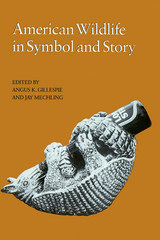

Amy Jacques Garvey was one of the most prolific women within any Black nationalist group, yet she has largely only been discussed in relationship to her husband, Black nationalist Marcus Garvey, and as the editor of the Philosophy and Opinions of Marcus Garvey. Much of her writing has remained unavailable to the public, lost to the archives, until now. Amy Jacques Garvey: Selected Writings from the Negro World, 1923–1928 seeks to fill this void by making her writings in the Negro Worldwidely available for the first time.
Editor Louis J. Parascandola compiles a wide swath of Jacques Garvey’s work in this groundbreaking collection. Born and educated in Jamaica, Jacques Garvey’s atypical opportunity to receive education at elite Jamaican schools, along with her later jobs as a clerk and secretary, prepared her for future positions as journalist and political administrator. She also possessed the rhetorical skills and independent thinking that would help her challenge Marcus Garvey and the other men in Garvey’s organization, the Universal Negro Improvement Association and African Communities League (UNIA). In allowing Jacques Garvey’s work to largely speak for itself, the volume reveals that she concerned herself with a diversity of important and often controversial political and social issues rather than the stereotypical domestic matters expected of most woman’s pages of the time period.
By examining her selected writings in the Negro World, this volume affords its readers a better understanding of Jacques Garvey’s powerful contribution not only to Garveyism but also to the growth of Black radical thought, anti-imperialist ideology, and the rights of third-world women. This timely study sheds new light on Jacques Garvey’s pivotal role as a Black female writer and thinker during the twenties.
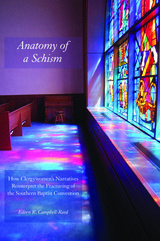
From 1979 to 2000, the Southern Baptist Convention (SBC) was mired in conflict, with the biblicist and autonomist parties fighting openly for control. This highly polarizing struggle ended in a schism that created major changes within the SBC and also resulted in the formation of several new Baptist groups. Discussions of the schism, academic and otherwise, generally ignore the church’s clergywomen for the roles they played and the contributions they made to the fracturing of the largest Protestant group in the United States. Ordained women are typically treated as a contentious issue between the parties. Only recently are scholars beginning to take seriously these women’s contributions and interpretations as active participants in the struggle.
Anatomy of a Schism is the first book on the Southern Baptist split to place ordained women’s narratives at the center of interpretation. Author Eileen Campbell-Reed brings her unique perspective as a pastoral theologian in conducting qualitative interviews with five Baptist clergywomen and allowing their narratives to focus attention on both psychological and theological issues of the split. The stories she uncovers offer a compelling new structure for understanding the path of Southern Baptists at the close of the twentieth century. The narratives of Anna, Martha, Joanna, Rebecca, and Chloe reframe the story of Southern Baptists and reinterpret the rupture and realignment in broad and significant ways. Together they offer an understanding of the schism from three interdisciplinary perspectives—gendered, psychological, and theological—not previously available together. In conversation with other historical events and documents, the women’s narratives collaborate to provide specific perspectives with universal implications for understanding changes in Baptist life over the last four decades.
The schism’s outcomes held profound consequences for Baptist individuals and communities. Anatomy of Schism is an illuminating ethnographic and qualitative study sure to be indispensable to scholars of theology, history, and women’s studies alike.
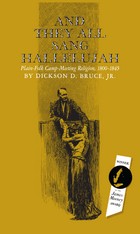

Andrew Jackson’s presidency and legacy have been the subject of much study. His career and life, particularly his actions as America’s seventh president, still reverberate in our culture today. Yet Amos Kiewe mounts a groundbreaking intervention into Jackson studies by focusing his critical lens on a little-studied aspect of the populist leader’s 1830–31 campaign and subsequent presidency: his creative use of the press. Jackson was a force for reinvention, cannily directing his speeches—like no previous candidate—to the public at large and garnering unprecedented newspaper coverage throughout his campaign and time in office. By focusing on public addresses, Kiewe is able to trace Jackson’s rhetorical political maneuvering through his early campaign and the major trials of his presidency.
With nuance and deep examination of Jackson’s rhetoric, Kiewe dispels the myth that Jackson was not an articulate writer, thereby clarifying historical perceptions of his presidency and relationship to the public at large. Tracing Jackson’s initial plans for the presidency through his campaign and early time in office, Kiewe sheds light on Jackson’s ambitions, viewpoints, and strategies and deepens the scholarship on the Tennessee soldier and statesman.
Andrew Jackson: A Rhetorical Portrayal of Presidential Leadership offers significant insight into one of America’s most famous—and infamous—presidents, and adds new and critical information to the study of rhetoric and politics in the United States.

“Lucid and well-researched.” —The New Yorker
In order to win the famous battle of New Orleans, Andrew Jackson believed that it was necessary to declare martial law and suspend the writ of habeas corpus. In doing so, he achieved both a great victory and the notoriety of being the first American general to ever suspend civil liberties in America.
Andrew Jackson and the Politics of Martial Law tells the history of Jackson’s use of martial law and how the controversy surrounding it followed him throughout his life. The work engages the age-old controversy over if, when, and who should be able to subvert the Constitution during times of national emergency. It also engages the continuing historical controversy over Jackson’s political prowess and the importance of the rise of party politics during the early republic. As such, the book contributes to both the scholarship on Jackson and the legal and constitutional history of the intersection between the military and civilian spheres.
To fully understand the history of martial law and the subsequent evolution of a theory of emergency powers, Matthew Warshauer asserts, one must also understand the political history surrounding the discussion of civil liberties and how Jackson’s stature as a political figure and his expertise as a politician influenced such debates. Warshauer further explains that Abraham Lincoln cited Jackson’s use of the military and suspension of civil liberties as justification for similar decisions during the Civil War. During both Jackson’s and Lincoln’s use of martial law, critics declared that such an action stood in opposition to both the Constitution and the nation’s cherished republican principles of protecting liberty from dangerous power, especially that of the military. Supporters of martial law insisted that saving the nation became the preeminent cause when the republic was endangered. At the heart of such arguments lurked the partisan maneuvering of opposing political parties.
Andrew Jackson and the Politics of Martial Law is a powerful examination of the history of martial law, its first use in the United States, and the consequent development of emergency powers for both military commanders and presidents.
Matthew Warshauer is associate professor of history at Central Connecticut State University. He is the author of the forthcoming Andrew Jackson: First Men, America’s Presidents. His articles have appeared in Tennessee Historical Quarterly, Connecticut History, Louisiana History, and New York History.
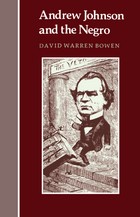
“Bowen has probed the working of Andrew Johnson’s mind. His analysis illuminates the character of East Tennessee’s tailor president and the contradictions—as well as the consistency—of his policies toward slavery and toward blacks.”— LaWanda Cox, author of Lincoln and Black Freedom: A Study in Presidential Leadership
Andrew Johnson, who was thrust into the office of presidency by Lincoln’s assassination, described himself as a “friend of the colored man.” Twentieth century historians have assessed Johnson’s racial attitudes differently.
In his revisionist study, David Bowen explores Johnson’s racist bias more deeply than other historians to date, and maintains that racism was, in fact, a prime motivator of his policies as a public official. A slave owner who defended the institution until the Civil War, Jonson accepted emancipation. Once Johnson became president, however, his racial prejudice reasserted itself as a significant influence on his Reconstruction policies.
Bowen’s study deftly analyzes the difficult personality of the seventeenth president and the political influences that molded him. This portrait of a man who, despite his many egalitarian notions, practiced racism, will intrigue historians and readers interested in Civil War and Reconstruction history alike.
The Author: David Warren Bowen, formerly on the staff of The Papers of Andrew Johnson, teaches history at Livingston University
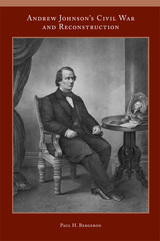
Few figures in American political history are as reviled as Andrew Johnson, the seventeenth president of the United States. Taking office after the assassination of Abraham Lincoln, he clashed constantly with Congress during the tumultuous early years of Reconstruction. He opposed federally-mandated black suffrage and the Fourteenth Amendment and vetoed the Freedmen’s Bureau and Civil Rights bills.
In this new book, Paul H. Bergeron, a respected Johnson scholar, brings a new perspective on this often vilified figure. Previous books have judged Johnson out of the context of his times or through a partisan lens. But this volume—based on Bergeron’s work as the editor of The Papers of Andrew Johnson—takes a more balanced approach to Johnson and his career.
Admiring Johnson's unswerving devotion to the Union, Lincoln appointed him as military governor of Tennessee, a post, Bergeron argues, that enhanced Johnson's executive experience and his national stature. While governor, Johnson implemented the emancipation of slaves in the state and laid the foundation for a new civilian government. Bergeron also notes that Johnson developed a close connection with the president which eventually resulted in his vice-presidential candidacy. In many respects, therefore, Johnson's Civil War years served as preparation for his presidency. Bergeron moves beyond simplistic arguments based on Johnson’s racism to place his presidency within the politics of the day. Putting aside earlier analyses of the conflict between Johnson and the Republican Radicals as ideological disputes, Bergeron discusses these battles as a political power struggle. In doing so, he does not deny Johnson’s racism but provides a more nuanced and effective perspective on the issues as Johnson tried to pursue the “politics of the possible.”
Bergeron interprets Johnson as a strong-willed, decisive, fearless, authoritarian leader in the tradition of Andrew Jackson. While never excusing Johnson’s inflexibility and extreme racism, Bergeron makes the case that, in proper context, Johnson can be seen at times as a surprisingly effective commander-in-chief—one whose approach to the problems of reestablishing the Union was defensible and consistent.
With its fresh insight on the man and his times, Andrew Johnson’s Civil War and Reconstruction is indispensable reading for students and scholars of the U.S. presidency and the Civil War and Reconstruction periods.
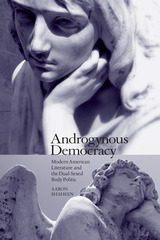
Androgynous Democracy examines how the notions of gender equality propounded by transcendentalists and other nineteenth-century writers were further developed and complicated by the rise of literary modernism. Aaron Shaheen specifically investigates the ways in which intellectual discussions of androgyny, once detached from earlier gonadal-based models, were used by various American authors to formulate their own paradigms of democratic national cohesion. Indeed, Henry James, Frank Norris, Charlotte Perkins Gilman, John Crowe Ransom, Grace Lumpkin, W. E. B. Du Bois, and Marita Bonner all expressed a deep fascination with androgyny—an interest that bore directly on their thoughts about some of the most prominent issues America confronted as it moved into the first decades of the twentieth century.
Shaheen not only considers the work of each of these seven writers individually, but he also reveals the interconnectedness of their ideas. He shows that Henry James used the concept of androgyny to make sense of the discord between the North and the South in the years immediately following the Civil War, while Norris and Gilman used it to formulate a new model of citizenship in the wake of America’s industrial ascendancy. The author next explores the uses Ransom and Lumpkin made of androgyny in assessing the threat of radicalism once the Great Depression had weakened the country’s faith in both capitalism and religious fundamentalism. Finally, he looks at how androgyny was instrumental in the discussions of racial uplift and urban migration generated by Du Bois and Bonner.
Thoroughly documented, this engrossing volume will be a valuable resource in the fields of American literary criticism, feminism and gender theory, queer theory, and politics and nationalism.
Aaron Shaheen is UC Foundation Assistant Professor of English at the University of Tennessee at Chattanooga. He has published articles in the Southern Literary Journal, American Literary Realism, and the Henry James Review.
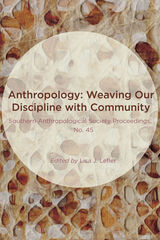
Anthropology: Weaving Our Discipline with Community presents examples of anthropologists working with Native communities to preserve and protect cultural heritage.Ray Fogelson provides a glimpse of his work with the Eastern Band of Cherokee Indians in the late 1950s and early 1960s. Linguist Hartwell Francis shares his work on language preservation in the community today. Jim Sarbaugh and Lisa Lefler focus on traditional knowledge and health among the Cherokee. Trey Adcock explores the reasons that American Indians are strikingly underrepresented among both the student bodies and faculty of institutions of higher education. Brandon Lundy and his colleagues discuss the co-production of knowledge in ethnographic interviews with business, NGO, and government representatives in Guinea-Bissau.These papers were presented at the 2014 annual meeting of the Southern Anthropological Society (SAS) in Cherokee, North Carolina.

Confederacy, Jones responded by welding hagiography and denominationalism to create, in effect, a sacred history of the Southern cause.
In a series of popular books and in his work as secretary of the Southern Historical Society Papers, Jones’s mission became the canonization of Confederate saints, most notably Lee, Stonewall Jackson, and Jefferson Davis, for a postwar generation and the contrivance of a full-blown myth of Southern virtue-in-defeat that deeply affected historiography for decades to come. While personally committed to Baptist identity, Jones supplied his readers with embodiments of Southern morality who transcended denominational boundaries and enabled white Southerners to locate their champions (and themselves) in a quasi-biblical narrative that ensured ultimate vindication for the Southern cause.
In a time when Confederate monuments and the enduring effects of white supremacy are in the daily headlines, an examination of this key figure in the creation of the Lost Cause legacy could not be more relevant.
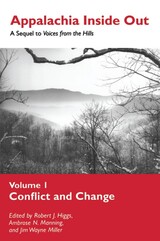
These two volumes constitute the most comprehensive anthology of writings on Appalachia ever assembled. Representing the work of approximately two hundred authors—fiction writers, poets, scholars in disciplines such as history, literary criticism, and sociology—Appalachia Inside Out reveals the fascinating diversity of the region and lays to rest many of the reductive stereotypes long associated with it.
Intended as a sequel to the widely respected collection Voices of the Hills, edited by Robert Higgs and Ambrose Manning and published twenty years ago, these volumes reflect the recent proliferation of imaginative and critical writing about Appalachia—a proliferation that suggests nothing less than a renaissance of collective self-assessment. The selections are organized around a variety of themes (including "War and Revolution," "Feuds and Violence," "Nature and Progress," "Dialect and Language," "Exile, Return, and Sense of Place," and "Majority and Minority") and reveal both the radical changes the region has undergone as well as the persistence of certain defining features.
The title Appalachia Inside Out refers in part to the fact that Appalachia has never existed in timeless isolation from the rest of country and the world; rather, it has both absorbed outside influences and exerted influence of its own. The title also indicates the editors' effort to look not only at the visible Appalachia but at the forces that underlie its history and culture. What emerges in these pages is an Appalachia both familiar and strange: a mirror of lived life on the one hand and, on the other, a haunted realm of unimaginable loss and bewitching possibility.
The Editors: Robert J. Higgs is professor of English, emeritus, at East Tennessee State University and the author of Laurel and Thorn: The Athlete in American Literature.
Ambrose N. Manning is professor of English, emeritus, at East Tennessee State University and a noted collector of folk songs and folklore.
Jim Wayne Miller, a poet, novelist, and essayist, is a professor in the Department of Modern Languages and Intercultural Studies at Western Kentucky University.
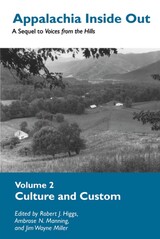
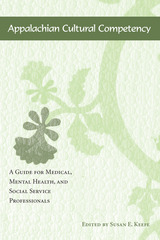
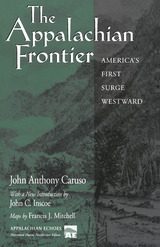
Looking at the rich and mountainous land between the Ohio and Tennessee Rivers, The Appalachian Frontier follows the story of the Long Hunters in Kentucky; the struggles of the Regulators in North Carolina; the founding of the Watauga, Transylvania, Franklin, and Cumberland settlements; the siege of Boonesboro; and the patterns and challenges of frontier life. While narrating the gripping stories of such figures as Daniel Boone, George Rogers Clark, and Chief Logan, Caruso combines social, political, and economic history into a comprehensive overview of the early mountain South.
In his new introduction, John C. Inscoe examines how this work exemplified the so-called consensus school of history that arose in the United States during the cold war. Unabashedly celebratory in his analysis of American nation building, Caruso shows how the development of Appalachia fit into the grander scheme of the evolution of the country. While there is much in The Appalachian Frontier that contemporary historians would regard as one-sided and romanticized, Inscoe points out that “those of us immersed so deeply in the study of the region and its people sometimes tend to forget that the white settlement of the mountain south in the eighteenth century was not merely the chronological foundation of the Appalachian experience. As Caruso so vividly demonstrates, it is also represented a vital—even defining—stage in the American progression across the continent.”
The Author: John Anthony Caruso was a professor of history at West Virginia University. He died in 1997.
John C. Inscoe is professor of history at the University of Georgia. He is editor of Appalachians and Race: The Mountain South from Slavery to Segregation and author of Mountain Masters: Slavery and the Sectional Crisis in Western North Carolina.
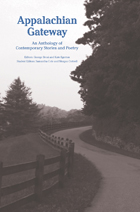
These works encompass a variety of themes that, collectively, capture the essence of Appalachia: love of the land, family ties, and the struggle to blend progress with heritage. Readers will enjoy this book not just for the innate value of good literature but also for the insights it provides into this fascinating area. This book of fiction is an enlightening companion to non-fiction overviews of the region, including the Encyclopedia of Appalachia and A Handbook to Appalachia: An Introduction to the Region, both published by the University of Tennessee Press in 2006. In fact the five sections of this book are the same as those of the Encyclopedia.
Educators and students will find this book especially appropriate for courses in creative writing, Appalachian studies and Appalachian literature. Editor George Brosi’s foreword presents an historical overview of Appalachian Literature, while Kate Egerton and Morgan Cottrell’s afterword offers a helpful guide for studying Appalachian literature in a classroom setting.
Kate Egerton is an associate professor of English at Berea College. She has taught Appalachian literature and published scholarship in that field as well as in modern drama.
Samantha Cole majored in Appalachian Studies and worked for Appalachian Heritage while a student at Berea College. Morgan Cottrell is a West Virginia native who took Kate Egerton's Appalachian literature class at Berea College.
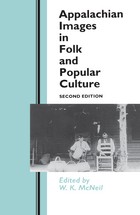
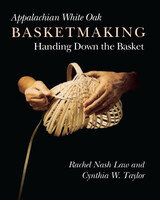
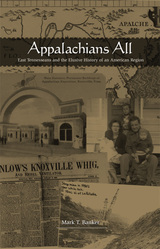
“A singular achievement. Mark Banker reveals an almost paradoxical Appalachia that trumps all the stereotypes. Interweaving his family history with the region’s latest scholarship, Banker uncovers deep psychological and economic interconnections between East Tennessee’s ‘three Appalachias’—its tourist-laden Smokies, its urbanized Valley, and its strip-mined Plateau.”
—Paul Salstrom, author of Appalachia’s Path to Dependency
"Banker weaves a story of Appalachia that is at once a national and regional history, a family saga, and a personal odyssey. This book reads like a conversation with a good friend who is well-read and well-informed, thoughtful, wise, and passionate about his subject. He brings new insights to those who know the region well, but, more importantly, he will introduce the region's complexities to a wider audience."
—Jean Haskell, coeditor, <i>Encyclopedia of Appalachia</i>
Appalachians All intertwines the histories of three communities—Knoxville with its urban life, Cades Cove with its farming, logging, and tourism legacies, and the Clearfork Valley with its coal production—to tell a larger story of East Tennessee and its inhabitants. Combining a perceptive account of how industrialization shaped developments in these communities since the Civil War with a heartfelt reflection on Appalachian identity, Mark Banker provides a significant new regional history with implications that extend well beyond East Tennessee’s boundaries.
Writing with the keen eye of a native son who left the area only to return years later, Banker uses elements of his own autobiography to underscore the ways in which East Tennesseans, particularly “successful” urban dwellers, often distance themselves from an Appalachian identity. This understandable albeit regrettable response, Banker suggests, diminishes and demeans both the individual and region, making stereotypically “Appalachian” conditions self-perpetuating. Whether exploring grassroots activism in the Clearfork Valley, the agrarian traditions and subsequent displacement of Cades Cove residents, or Knoxvillians’ efforts to promote trade, tourism, and industry, Banker’s detailed historical excursions reveal not only a profound richness and complexity in the East Tennessee experience but also a profound interconnectedness.
Synthesizing the extensive research and revisionist interpretations of Appalachia that have emerged over the last thirty years, Banker offers a new lens for constructively viewing East Tennessee and its past. He challenges readers to reconsider ideas that have long diminished the region and to re-imagine Appalachia. And ultimately, while Appalachians All speaks most directly to East Tennesseans and other Appalachian residents, it also carries important lessons for any reader seeking to understand the crucial connections between history, self, and place.
Mark T. Banker, a history teacher at Webb School of Knoxville, resides on the farm where he was raised in nearby Roane County. He earned his PhD at the University of New Mexico and is the author of Presbyterian Missions and Cultural Interaction in the Far Southwest, 1850–1950. His articles have appeared in the Journal of Presbyterian History, Journal of the West, OAH Magazine of History, and Appalachian Journal.
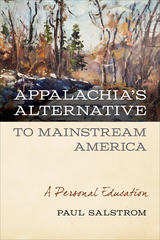
In many communities across North America in the 1960s and 1970s, the rural-relocation movement became both a way of life and a path forward for many people inclined to buck the mainstream—and Paul Salstrom embraced it. His experiences in rural Lincoln County, West Virginia, led him to the self-sufficient, “neighborly networking” lifestyle well known in many Appalachian communities since the early nineteenth century.
In Appalachia’s Alternative to Mainstream America, Salstrom outlines his Appalachian experiences in a memoir, revisiting this back-to-the-land tradition that guided his cultural experience during this time. While he pursued a number of experimental alternatives to a mainstream way of life during the late 1960s, it was not until he landed in Lincoln County a few years later that he found himself engaging in an alternative way of living that didn’t feel “experimental” at all. This distinctive way of life was largely characterized by a closer connection to the earth—local sufficiency informed by homesteading, subsistence farming, and gardening—and the community-wide trading of favors in a spirit of mutual aid.
Over time, Salstrom’s engagement in this “neighborly” occupation has nurtured an informed belief that Americans will be drawn back to landed customs, taking care of the earth and of one another to thrive as individuals and communities. Facing today’s pandemics, climate change, and deepening political divisions, says Salstrom, Americans urgently need to create a groundswell of localized food security and energy production.
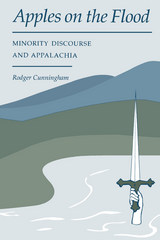

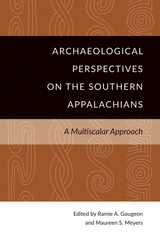
In Archaeological Perspectives of the Southern Appalachians, Ramie A. Gougeon and Maureen S. Meyers have brought together a dozen archaeologists to delineate multiscalar approaches to Native American sites throughout southern Appalachia. The essays range in topic from ceramic assemblages in northern Georgia to public architecture in North Carolina to the frontiers of southern Appalachia in Virginia. Throughout the volume, the contributors discuss varying scales of analysis in their own research to flesh out the importance of maintaining different perspectives when evaluating archaeological evidence.
Additionally, the volume makes particular reference to the work of David Hally, whose influence on not only the editors and contributors but on southeastern archaeology as a whole cannot be overstated. While Hally was neither a pioneer nor vocal champion of scale variation, his impeccable research, culminating with the publication of his magnum opus King: The Social Archaeology of a Late Mississippian Town in Northwestern Georgia paved the way for younger scholars to truly develop research methods for holistic social archaeology.
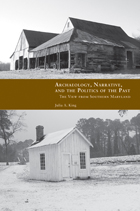
In this innovative work, Julia King moves nimbly among a variety of sources and disciplinary approaches—archaeological, historical, architectural, literary, and art-historical—to show how places take on, convey, and maintain meanings. Focusing on the beautiful Chesapeake Bay region of Maryland, King looks at the ways in which various groups, from patriots and politicians of the antebellum era to present-day archaeologists and preservationists, have transformed key landscapes into historical, indeed sacred, spaces.
The sites King examines include the region’s vanishing tobacco farms; St. Mary’s City, established as Maryland’s first capital by English settlers in the seventeenth century; and Point Lookout, the location of a prison for captured Confederate soldiers during the Civil War. As the author explores the historical narratives associated with such places, she uncovers some surprisingly durable myths as well as competing ones. St. Mary’s City, for example, early on became the center of Maryland’s “founding narrative” of religious tolerance, a view commemorated in nineteenth-century celebrations and reflected even today in local museum exhibits and preserved buildings. And at Point Lookout, one private group has established a Confederate Memorial Park dedicated to those who died at the prison, thus nurturing the Lost Cause ideology that arose in the South in the late 1800s, while nearby the custodians of a 1,000-acre state park avoid controversy by largely ignoring the area’s Civil War history, preferring instead to concentrate on recreation and tourism, an unusually popular element of which has become the recounting of ghost stories.
As King shows, the narratives that now constitute the public memory in southern Maryland tend to overlook the region’s more vexing legacies, particularly those involving slavery and race. Noting how even her own discipline of historical archaeology has been complicit in perpetuating old narratives, King calls for research—particularly archaeological research—that produces new stories and “counter-narratives” that challenge old perceptions and interpretations and thus convey a more nuanced grasp of a complicated past.
Julia A. King is an associate professor of anthropology at St. Mary’s College of Maryland, where she coordinates the Museum Studies Program and directs the SlackWater Center, a consortium devoted to exploring, documenting, and interpreting the changing landscapes of Chesapeake communities. She is also coeditor, with Dennis B. Blanton, of Indian and European Contact in Context: The Mid-Atlantic Region.
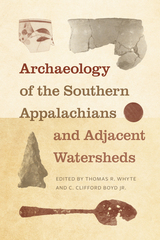
This book presents archaeology addressing all periods in the Native Southeast as a tribute to the career of Jefferson Chapman, longtime director of the Frank H. McClung Museum of Natural History and Culture at the University of Tennessee, Knoxville. Written by Chapman’s colleagues and former students, the chapters add to our current understanding of early native southeastern peoples as well as Chapman’s original work and legacy to the field of archaeology. Some chapters review, reevaluate, and reinterpret archaeological evidence using new data, contemporary methods, or alternative theoretical perspectives— something that Chapman, too, fostered throughout his career. Others address the history and significance of archaeological collections curated at the Frank H. McClung Museum of Natural History and Culture, where Chapman was the director for nearly thirty years. The essays cover a broad range of archaeological material studies and methods and in doing so carry forth Chapman’s legacy.
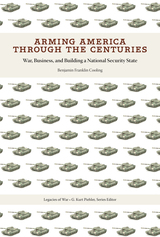
While many associate the concept commonly referred to as the “military-industrial complex” with President Dwight D. Eisenhower’s 1961 farewell address, the roots of it existed two hundred years earlier. This concept, as Benjamin Franklin Cooling writes, was “part of historical lore” as a burgeoning American nation discovered the inextricable relationship between arms and the State. In Arming America through the Centuries, Cooling examines the origins and development of the military-industrial complex (MIC) over the course of American history. He argues that the evolution of America’s military-industrial-business-political experience is the basis for a contemporary American Sparta. Cooling explores the influence of industry on security, the increasing prevalence of outsourcing, ever-present economic and political influence, and the evolving nature of modern warfare. He connects the budding military-industrial relations of the colonial era and Industrial Revolution to their formal interdependence during the Cold War down to the present-day resurrection of Great Power competition. Across eight chronological chapters, Cooling weaves together threads of industry, finance, privatization, appropriations, and technology to create a rich historical tapestry of US national defense in one comprehensive volume.
Integrating information from both recent works as well as canonical, older sources, Cooling’s ambitious single-volume synthesis is a uniquely accessible and illuminating survey not only for scholars and policymakers but for students and general readers as well.

needs of soldiers on the battlefield. He was thus dismayed by America’s lack of military
preparedness when a second great war engulfed Europe in 1939–40. With the international
crisis worsening, Patterson even resumed military training—as a forty-nine-yearold
private—before being named assistant secretary of war in July 1940. That appointment
set the stage for Patterson’s central role in the country’s massive mobilization and
supply effort which helped the Allies win World War II.
In Arming the Nation for War, a previously unpublished account long buried among
the late author’s papers and originally marked confidential, Patterson describes the vast
challenges the United States faced as it had to equip, in a desperately short time, a fighting
force capable of confronting a formidable enemy. Brimming with data and detail, the book
also abounds with deep insights into the myriad problems encountered on the domestic
mobilization front—including the sometimes divergent interests of wartime planners and
industrial leaders—along with the logistical difficulties of supplying far-flung theaters of
war with everything from ships, planes, and tanks to food and medicine. Determined to
remind his contemporaries of how narrow the Allied margin of victory was and that the
war’s lessons not be forgotten, Patterson clearly intended the manuscript (which he wrote
between 1945 and ’47, when he was President Truman’s secretary of war) to contribute
to the postwar debates on the future of the military establishment. That passage of the
National Security Act of 1947, to which Patterson was a key contributor, answered many of
his concerns may explain why he never published the book during his lifetime.
A unique document offering an insider’s view of a watershed historical moment, Patterson’s
text is complemented by editor Brian Waddell’s extensive introduction and notes.
In addition, Robert M. Morgenthau, former Manhattan district attorney and a protégé of
Patterson’s for four years prior to the latter’s death in a 1952 plane crash, offers a heartfelt
remembrance of a man the New York Herald-Tribune called “an example of the public-spirited
citizen.”
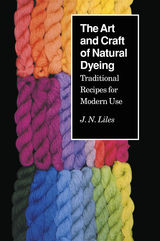
" . . . a must for every dyer. The recipes are explicit and detailed as to success and failure."—Mary Frances Davidson
For several thousand years, all dyes were of animal, vegetable, or mineral origin, and many ancient civilizations possessed excellent dye technologies. The first synthetic dye was produced in 1856, and the use of traditional dyes declined rapidly thereafter. By 1915 few non-synthetics were used by industry or craftspeople. The craft revivals of the 1920s explored traditional methods of natural dyeing to some extent, particularly with wool, although the great eighteenth- and nineteenth-century dye manuals, which recorded the older processes, remained largely forgotten.
In The Art and Craft of Natural Dyeing, J. N. Liles consolidates the lore of the older dyers with his own first-hand experience to produce both a history of natural dyes and a practical manual for using pre–synthetic era processes on all the natural fibers--cotton, linen, silk, and wool. A general section on dyeing and mordanting and a glossary introduce the beginner to dye technology. In subsequent chapters, Liles summarizes the traditional dye methods available for each major color group. Scores of recipes provide detailed instructions on how to collect ingredients--flowers, weeds, insects, wood, minerals--prepare the dyevat, troubleshoot, and achieve specific shades.
The book will appeal not only to beginning and veteran dyers but to students of restorations and reconstruction as well as to craftspeople--spinners, quilters, weavers, knitters, and other textile artists--interested in natural dyes for their beauty and historical authenticity.
The Author: J. N. Liles is professor of zoology at the University of Tennessee, Knoxville. He has taught at Arrowmont School and other regional craft schools and has exhibited his work at the Arrowmont School, the Southern Highland Handicraft Guild Folk Art Center, and the Carol Reece Museum.
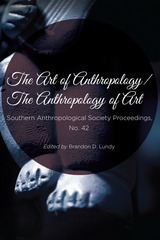
Collectively, the essays in this volume explore not only art through the lens of anthropology but also anthropology through the lens of art. Given that art is a social phenomenon, the contributors to this volume interpret the complex relationships between art and anthropology as a means of fashioning novelty, continuity, and expression in everyday life. They further explore this connection by reifying customs and traditions through texts, textures, and events, thereby shaping the very artistic skills acquired by experience, study, and observation into something culturally meaningful.
In this book, the contributors revisit older debates within the discipline about the relationship between anthropology’s messages and the rhetoric that conveys those messages in new ways. They ask how and why anthropology is persuasive and how artful forms of anthropology in the media and the classroom shape and shift public understandings of the human world.
The papers in this volume are organized into four groups: Textual Art, Art Valuation, Critical Art, and Art and Anthropology in Our Classroom and Colleges.
Brandon D. Lundy is an assistant professor of anthropology at Kennesaw State University.
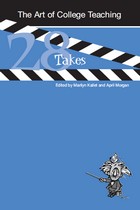
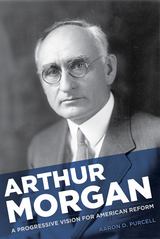
Purcell pinpoints Morgan’s reading of Edward Bellamy’s Looking Backward while a teenager as a watershed moment in the development of his vision for building modern American society. He recounts Morgan’s early successes as an engineer, budding Progressive leader, and educational reformer; his presidency of Antioch College; and his revolutionary but contentious tenure at the TVA. After his dismissal from the TVA, Morgan wrote extensively, eventually publishing over a dozen books, including a biography of Edward Bellamy, and countless articles. He also raised money to support an experimental community in Kerala, India, sharing Mahatma Gandhi’s belief in small, self-sustaining communities cooperatively supported by persons of strong moral character. At the same time, however, Morgan retained many of his late-nineteenth century beliefs, including eugenics, as part of his societal vision. His authoritarian administrative style and moral rigidity limited his ability to attract large numbers to his community-based vision.
As Purcell demonstrates, Morgan remained an active reformer well into the second half of the twentieth century, carrying forward a vision for American reform decades after his Progressive Era contemporaries had faded into obscurity. By presenting Morgan’s life and career within the context of the larger social and cultural events of his day, this revealing biographical study offers new insight into the achievements and motivations of an important but historically neglected American reformer.

In this collection of essays, ten experts in turn-of-the-century popular and material culture examine how the struggle between modernity and tradition was reflected in various facets of the household aesthetic. Their findings touch on sub-themes of gender, generation, and class to provide a fascinating commentary on what middle-class Americans were prepared to discard in the name of modernity and what they stubbornly retained for the sake of ideology. Through an examination of material culture and prescriptive literature from this period, the essayists also demonstrate how changes in artistic expression affected the psychological, social, and cultural lives of everyday Americans.
This book joins a growing list of titles dedicated to analyzing and interpreting the cultural dimensions of past domestic life. Its essays shed new light on house history by tracking the transformation of a significant element of home life - its expressions of art.

When David Brill’s now-classic account of his 1979 thru-hike of the 2,190-mile Appalachian Trail was released in 1990, it immediately struck a chord with veterans and aspirants of one of the world’s longest continuously marked footpaths. Over the years, the book has continued to sell through multiple printings.
As Far as the Eye Can See: Reflections of an Appalachian Trail Hiker, now in its fifth (thirtieth-anniversary) edition and eighth printing, was recently released by the University of Tennessee Press. The new edition features a new preface on Brill’s 2019 40th-anniversary reunion in Maine with his AT buddies, as well as prefaces to earlier editions and three bonus chapters that bring Brill’s continuing connection with the trail to near the present.
In the years following release of As Far as the Eye Can See, first-person accounts of hiking the trail burgeoned into a literary genre, but Brill’s book was among the first to capture the physical and spiritual aspects of the long journey across fourteen states.
Brill and his fellow hikers, who are all portrayed in the book, were relatively early devotees on a pilgrimage that, within a few decades, would become a popular rite of passage. Indeed, by the end of 1979, a mere 837 people had reported finishing the entire AT route over the trail’s then 42-year history. The total now easily exceeds 20,000.
Brill credits his trail experiences with inspiring his career as a magazine journalist and book author and providing the theme for much of his subsequent writing on nature and adventure travel. The trail also did much to shape his enduring values and beliefs.
“Though it took me a while to realize it, the trail had shaped me, had given me a philosophy, had toughened me in some ways, had softened me in others, and taught me lessons I will never forget: lessons on survival, kindness, strength, friendship, courage, perseverance, and the ways of nature,” Brill writes in the book’s final chapter, “Coming Home.” “Those lessons have affected everything I’ve done since.”
Readers find that Brill’s experiences and observations on the healing power of nature from forty years ago are equally relevant in today’s world.
The book’s first edition received widespread critical acclaim. The San Francisco Book Reader wrote: “Evocatively written gems of observation full of native wisdom brimming over with thoughts and exploits…. You read and read again, this book is that rich.” Many other reviewers have commended the book on its honest portrayal of the trail experience and the literary quality of its prose. In its review, The Roanoke Times effused “Thoreau lives!”
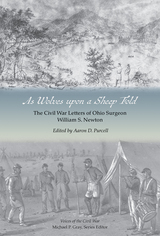
William S. Newton (1823–1882) served the Union primarily as an assistant surgeon with the 91st Ohio Volunteer Infantry, but also spent a few months as acting surgeon with the 2nd Virginia Cavalry (US). Toward the end of the war, he was promoted to surgeon for the 193rd Ohio Volunteer Infantry. Newton’s units fought in the Appalachian Highlands, mostly in Virginia and West Virginia. He treated wounded soldiers after significant battles including Opequon and Cedar Creek. In May 1864, following the Battle of Cloyd’s Mountain, John Hunt Morgan’s Raiders captured Newton and other medical personnel. After three weeks, Newton and his fellow prisoners were given the option of either treating Confederate soldiers or going to Libby Prison; they chose the latter. Newton spent only three days at Libby Prison before being released, but the experience took a significant toll on his health.
The letters in this volume, addressed mostly to Newton’s wife, Frances, provide a window into fighting in the Appalachian borderlands, where the differences between battle, guerilla warfare, and occupation were often blurred. As a noncombatant, the doctor observed life beyond troop movements and the brutality of war. Newton’s detailed letters cover his living quarters, race relations, transportation and communication, the comfort of a good meal, and the antics of his teenage son Ned. This book provides new insights into the medical and social history of the war, the war in Western Virginia, local and regional history, the perspective of a noncombatant, life on the home front, and the porous lines between home and battlefront.
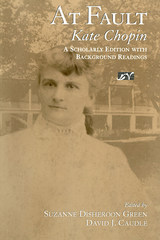
The novel centers on Therese Lafirme, a widow who owns and runs a plantation in post–Civil War Louisiana. She encounters David Hosmer, who buys timber rights to her property to secure raw materials for his newly constructed sawmill. When David remarries, a love triangle develops between David, Fanny (his alcoholic wife), and Therese, who tries to balance her strong moral sensibility against her growing love for David. In depicting these relationships, Chopin acutely dramatizes the conflict between growing industrialism and the agrarian traditions of the Old South—as well as the changes to the land and the society that inevitably resulted from that conflict.
Editors Suzanne Disheroon Green and David J. Caudle provide meticulous annotations to the text of At Fault, facilitating the reader’s understanding of the complex and exotic culture and language of nineteenth-century Louisiana. Also included is a substantial body of supporting materials thatcontextualize the novel, ranging from a summary of critical responses to materials illuminating the economic, social, historical, and religious influences on Chopin’s texts.
The Editors: Suzanne Disheroon Green is an assistant professor of English at Northwestern State University in Natchitoches, Louisiana. She is the co-author, with David J. Caudle, of Kate Chopin: An Annotated Bibliography of Critical Works, and co-editor with Lisa Abney, of the forthcoming Songs of the New South: Writing Contemporary Louisiana
David J. Caudle, who is completing his doctorate at the University of North Texas, has published essays and book chapters dealing with American literature and linguistic approaches to literature.
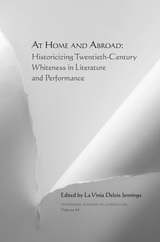
Drawing upon racialized, national practices implemented prior to and during the twentieth century, each of the essays enlists literature or performance to reflect the sociopolitical imperatives that secured whiteness in the respective locations they study. They range from examinations of whiteness in the literature of Appalachia and contemporary Argentinean poetry to an analysis of performances memorializing the colonial experience in Italy and an exploration into the white rap music of Eminem and contemporary multiracial passing.
As the contributors show, literary and performance representations have the power to chronicle histories that reflect the behaviors and lived realities of our selves. Whether whiteness, in addition to its physical manifestation, presents itself as identity, symbol, racism, culture, social formation, political imposition, legal imposition, or pathology, it has been outed into the visible, even in national spaces where the term “whiteness” has yet to be translated and entered into the official lexicon.
The ten essays collected here provide powerful insights into where and how the race for biological and genealogical whiteness persists in various geopolitical realms and the ways in which Nordic whites, as well as ethnic whites and nonwhites, resecure its ascendance.
La Vinia Delois Jennings is professor of English at the University of Tennessee, Knoxville. Her recent critical study Toni Morrison and the Idea of Africa won the 2008 Toni Morrison Society Prize for Best Single-Authored Book on the Nobel laureate and Pulitzer-Prize winning author.

At Work in the Atomic City explores the world of those workers and their efforts to form unions, create a community, and gain political rights over their city. It follows them from their arrival at Oak Ridge, to the places where they lived, and to their experiences in a dangerous and secretive workplace. Lured by promises of housing, plentiful work, and schooling for their children, they were often exposed to dangerous levels of radioactivity, harmful chemicals, and other hazards. Although scientists and doctors intended to protect workers, the pressure to produce materials for the bomb often overrode safety considerations. After the war, as the military sought to reduce services and jobs in Oak Ridge, workers organized unions at two plants to demand higher wages and job security. However, the new Taft-Hartley Act limited defense workers’ ability to strike and thus curbed union influence.
The book examines the ongoing debates over workers’ rights at Oak Ridge—notably the controversy surrounding the new federal program intended to compensate workers and their families for injuries sustained on the job. Because of faulty record keeping at the facilities and confusion over exposure levels, many have been denied payment to this day.
Drawing on extensive research into oral history collections, transcripts of government proceedings, and other primary sources, At Work in the Atomic City is the first detailed account of the workers who built and labored in the facilities that helped ensure the success of the Manhattan Project—a story known, heretofore, only in broad outline.
Russell Olwell, an assistant professor of history at Eastern Michigan University, has published articles in ISIS, Tennessee Historical Quarterly, and Technology and Culture.
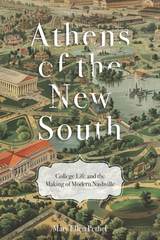
In 2013, the New York Times identified Nashville as America’s “it” city—a leading hub of music, culture, technology, food, and business. But long before, the Tennessee capital was known as the “Athens of the South,” as a reflection of the city’s reputation for and investment in its institutions of higher education, which especially blossomed after the end of the Civil War and through the New South Era from 1865 to 1930.
This wide-ranging book chronicles the founding and growth of Nashville’s institutions of higher education and their impressive impact on the city, region, and nation at large. Local colleges and universities also heavily influenced Nashville’s brand of modernity as evidenced by the construction of a Parthenon replica, the centerpiece of the 1897 Centennial Exposition. By the turn of the twentieth century, Vanderbilt University had become one of the country’s premier private schools, while nearby Peabody College was a leading teacher-training institution. Nashville also became known as a center for the education of African Americans. Fisk University joined the ranks of the nation’s most prestigious black liberal-arts universities, while Meharry Medical College emerged as one of the country’s few training centers for African American medical professionals. Following the agricultural-industrial model, Tennessee A&I became the state’s first black public college. Meanwhile, various other schools— Ward-Belmont, a junior college for women; David Lipscomb College, the instructional arm of the Church of Christ; and Roger Williams University, which trained black men and women as teachers and preachers—made important contributions to the higher educational landscape. In sum, Nashville was distinguished not only by the quantity of its schools but by their quality.
Linking these institutions to the progressive and educational reforms of the era, Mary Ellen Pethel also explores their impact in shaping Nashville’s expansion, on changing gender roles, and on leisure activity in the city, which included the rise and popularity of collegiate sports. In her conclusion, she shows that Nashville’s present-day reputation as a dynamic place to live, learn, and work is due in no small part to the role that higher education continues to play in the city’s growth and development.

In 2013, the New York Times identified Nashville as America’s “it” city—a leading hub of music, culture, technology, food, and business. But long before, the Tennessee capital was known as the “Athens of the South,” as a reflection of the city’s reputation for and investment in its institutions of higher education, which especially blossomed after the end of the Civil War and through the New South Era from 1865 to 1930.
This wide-ranging book chronicles the founding and growth of Nashville’s institutions of higher education and their impressive impact on the city, region, and nation at large. Local colleges and universities also heavily influenced Nashville’s brand of modernity as evidenced by the construction of a Parthenon replica, the centerpiece of the 1897 Centennial Exposition. By the turn of the twentieth century, Vanderbilt University had become one of the country’s premier private schools, while nearby Peabody College was a leading teacher-training institution. Nashville also became known as a center for the education of African Americans. Fisk University joined the ranks of the nation’s most prestigious black liberal-arts universities, while Meharry Medical College emerged as one of the country’s few training centers for African American medical professionals. Following the agricultural-industrial model, Tennessee A&I became the state’s first black public college. Meanwhile, various other schools— Ward-Belmont, a junior college for women; David Lipscomb College, the instructional arm of the Church of Christ; and Roger Williams University, which trained black men and women as teachers and preachers—made important contributions to the higher educational landscape. In sum, Nashville was distinguished not only by the quantity of its schools but by their quality.
Linking these institutions to the progressive and educational reforms of the era, Mary Ellen Pethel also explores their impact in shaping Nashville’s expansion, on changing gender roles, and on leisure activity in the city, which included the rise and popularity of collegiate sports. In her conclusion, she shows that Nashville’s present-day reputation as a dynamic place to live, learn, and work is due in no small part to the role that higher education continues to play in the city’s growth and development.
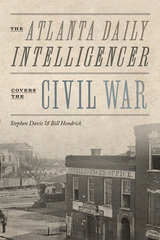
Confederate newspapers were beset by troubles: paper shortages, high ink prices, printers striking for higher pay, faulty telegraphic news service, and subscription prices insufficient to support their operations. But they also had the potential to be politically powerful, and their reporting of information—accurate or biased—shaped perceptions of the Civil War and its trajectory.
The Atlanta Daily Intelligencer Covers the Civil War investigates how Atlanta’s most important newspaper reported the Civil War in its news articles, editorial columns, and related items in its issues from April 1861 to April 1865. The authors show how The Intelligencer narrated the war’s important events based on the news it received, at what points the paper (and the Confederate press, generally) got the facts right or wrong based on the authors’ original research on the literature, and how the paper’s editorial columns reflected on those events from an unabashedly pro-Confederate point of view.
While their book focuses on The Intelligencer, Stephen Davis and Bill Hendrick also contribute to the scholarship on Confederate newspapers, emphasizing the papers’ role as voices of Confederate patriotism, Southern nationalism, and contributors to wartime public morale. Their well-documented, detailed study adds to our understanding of the relationship between public opinion and misleading propaganda
READERS
Browse our collection.
PUBLISHERS
See BiblioVault's publisher services.
STUDENT SERVICES
Files for college accessibility offices.
UChicago Accessibility Resources
home | accessibility | search | about | contact us
BiblioVault ® 2001 - 2024
The University of Chicago Press



